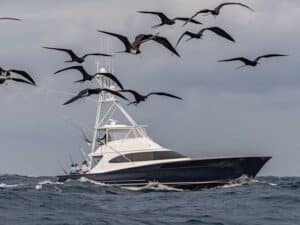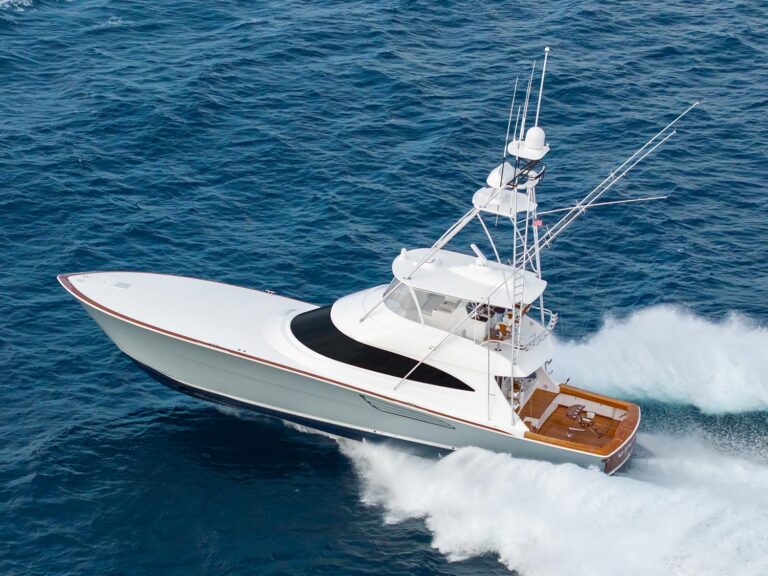When you are looking to put a trophy, world record or tournament winner in the boat, you need to be familiar with the tools you are working with. There are many different styles and configurations of flying gaffs, and choosing the right one for the job is essential. They do not come with instructions or danger warnings, but the first rule is a good shot with a small gaff is better than a bad shot with a big one.
The days of giant stainless-steel gaffs and aluminum poles are gone. Light gaffs make for better shots, and smaller gaff heads have smoother penetration and holding ability. My preference is the titanium 8- and 10-inch flyer heads outfitted with carbon fiber poles or a 9½-inch stainless-reinforced gaff head with a pivoting barb when heavy-tackle fishing. We also use ½-inch Samson yacht braid line for its minimal stretch.
Whenever my team plans to take a large fish, we have a minimum of four flying gaffs at the ready. Although only two are needed, we have used as many as five gaffs on a single fish—anything to get the job done, and occasionally things do not always go as planned.
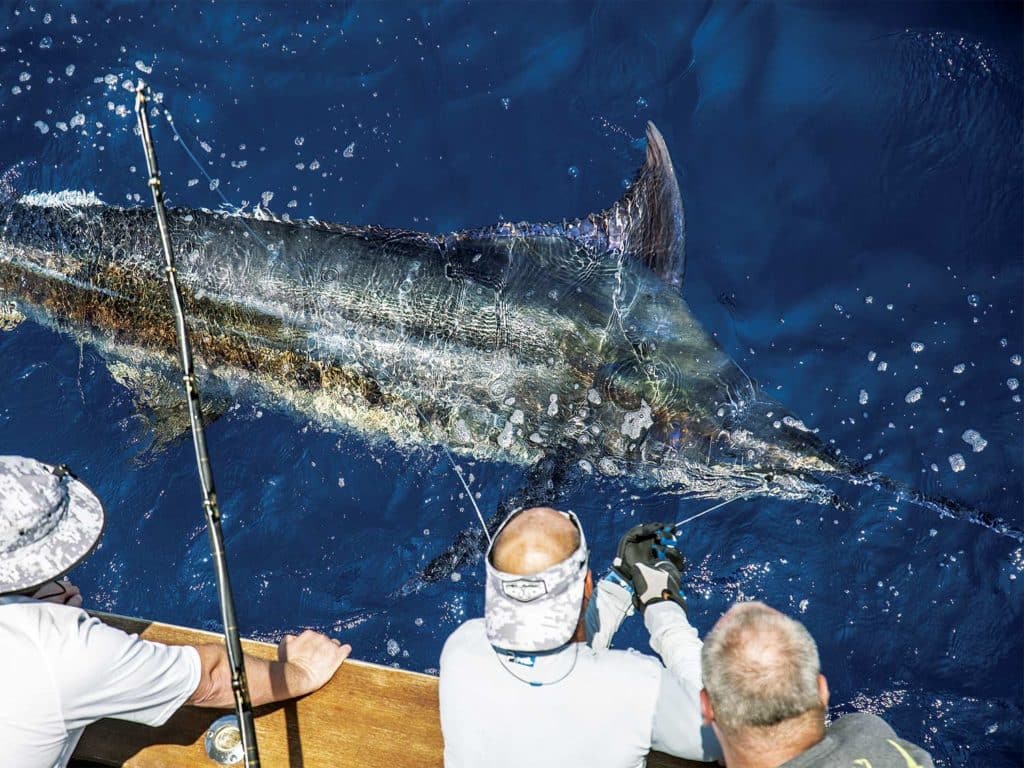
The Set-Up
Coat the shaft of the gaff head with Tef-Gel before inserting it into the gaff pole. This keeps corrosion at bay, especially because some gaffs are stored fully assembled for long periods of time. While pulling down firmly on the gaff line, use two full wraps of 3M 33-plus electrical tape around the rope and pole, approximately 6 inches from the point where the head is inserted. This keeps the gaff head from prematurely detaching from the pole.
Next, stretch the gaff line as tightly as possible and place the line in the notch on the end of the gaff pole, holding it firmly in place. Twist two or three No. 64 rubber bands around the line and pole a few inches from the end. This connection keeps the gaff head firmly in place until it is ready to be wielded, then ultimately detached.
All gaff ropes should be attached to the fighting chair pedestal by a bowline or loop in order to create a centerline pivot/anchor point for the gaff man.
IFGA rules allow for 30-foot gaff ropes, measured from the point where it is secured to the detachable gaff head. But just because you can, doesn’t mean you should. Your gaff line should be measured by securing the line to the chair pedestal, laying it flat on the deck and reaching as far forward as the gaff man can while fully extended.
No more line than this is needed. Using the least amount of gaff line possible will reduce stretch; excess stretch can cause a gaff head to tear out of the fish, which is very dangerous for crew members trying to subdue a big blue or black marlin.
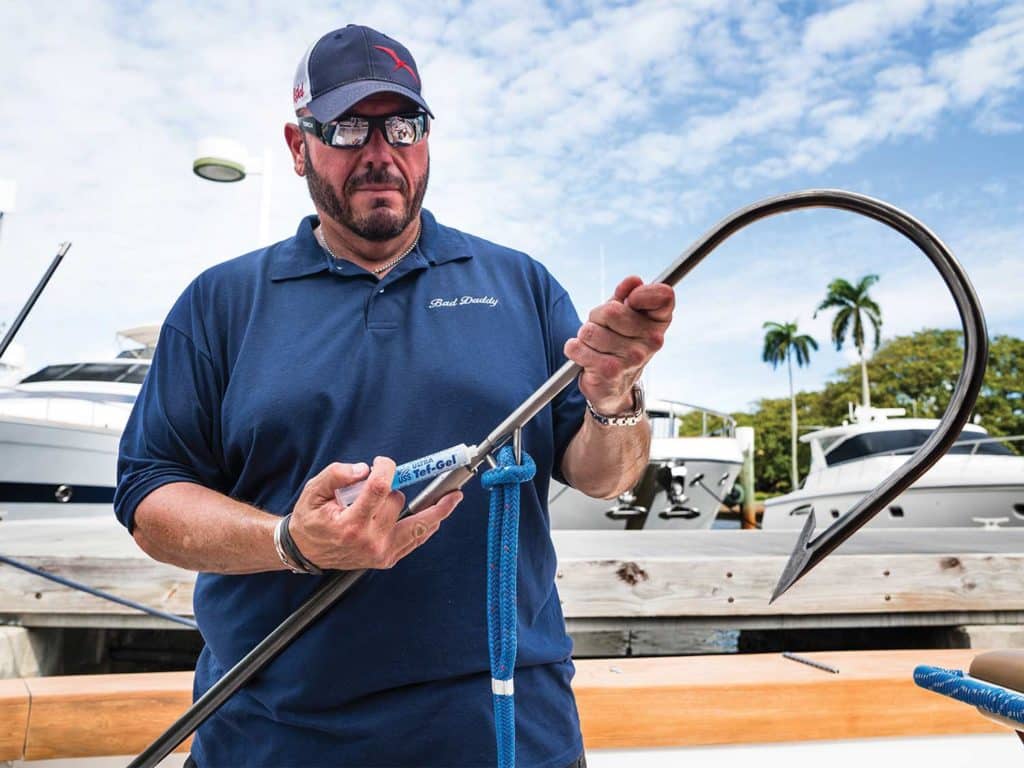
The Shot
As the fish is being played to the boat, the gaff man needs to stay ready, but out of the way of the wire man. His job is to help steer the chair, holding the gaff straight up and in the ready position. The gaff line is looped over the palm of his lightly gloved hand so that he does not step on it as he moves to take the shot. Stepping on the gaff line will cause the rubber bands to release, rendering the gaff useless.
The wire man should lead the fish as forward of the cockpit as possible to create a clean shoulder shot for the gaff man. The shoulder—just behind the dorsal fin—is the best place to gaff a marlin. It is important he never get forward of the wire man, which will cause the gaff to go over the leader, possibly compromising it or creating a bad shot placement where the fish could be lost at the boat.
If the fish is wrapped in the leader, or comes in at a strange angle or even belly up, do not gaff the fish in the belly. The belly skin is thin and will tear easily. A belly-gaffed fish will naturally right itself on the gaff, causing the gaff head to fall out. By reaching forward, parallel to the boat, a shoulder or back shot can be acquired. Stay away from gaffing the head, gill plate or tail section. The gaff man should be acutely aware of where he is in relation to the gaff line before the gaff breaks the plane of the covering board. If the fish is being gaffed on the port side, the gaff line should be aft or on the gaff man’s left side, the wire man on his right, and the reverse is true on the starboard side.
This becomes a real safety issue should the gaff man be forward of the wire man. If the gaff man stands forward of him as the gaff line comes tight, he will be trapped between the line and gunwale. As the second gaff goes in, no one should ever be standing between the two lines.
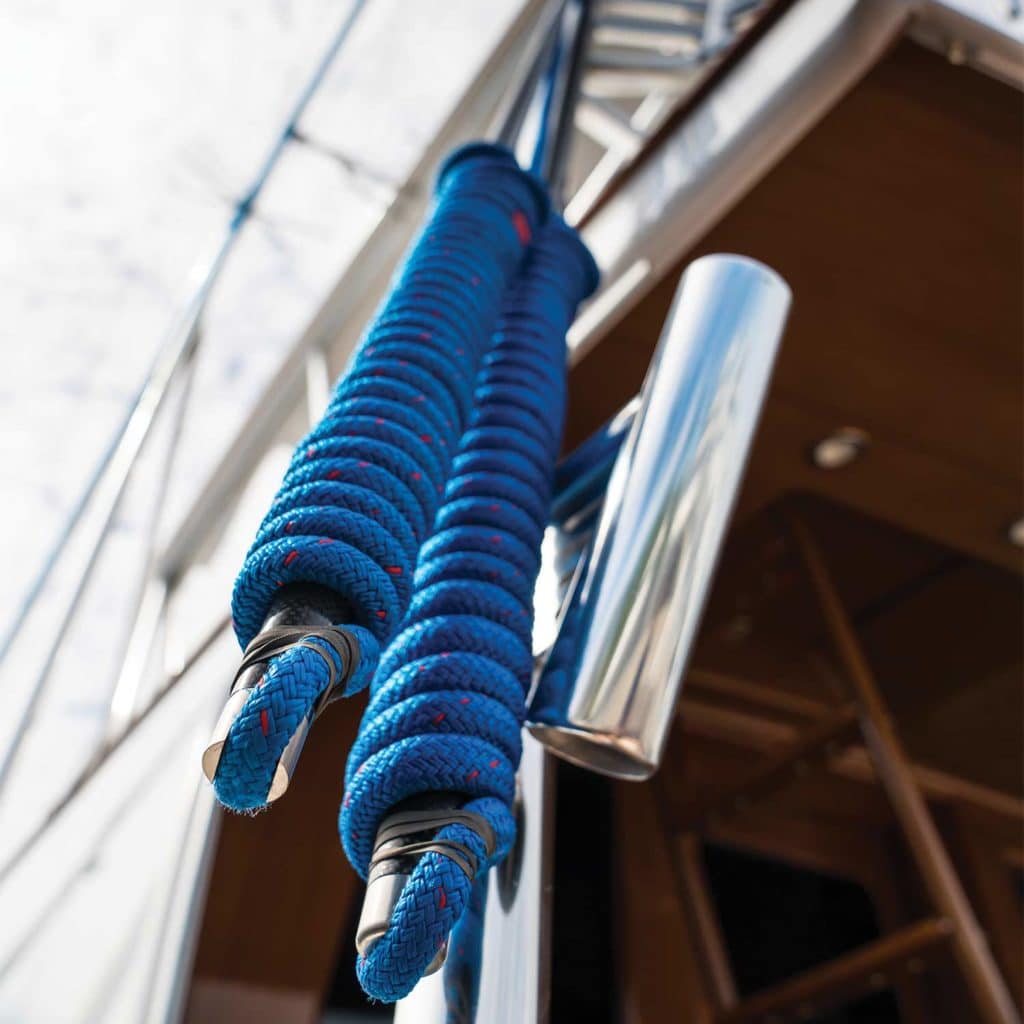
The Endgame
Once the gaffs go into the fish, the poles need to be detached quickly. This is done by pulling up on the gaff line, which will detach the rubber bands allowing the gaff head to break free from the pole.
Gaff poles should be slid toward the transom or under and behind the chair so as not to become a tripping hazard. With the gaff head free of the pole, several turns around the cockpit cleat are needed to secure the fish tightly to boat. At this point, a small meat hook can be used to quickly dispatch the fish. This meat hook is placed in the eye socket and pushed up through the top of the skull. With the meat-hook line, place two half-hitches on the bill and pull the fish through the door.
Learn to leader game fish here.
By properly setting up your gaffs, taking a textbook shot, being aware of what is going on around you and putting safety first, you are sure to successfully boat the fish you have waited your whole life to experience.


